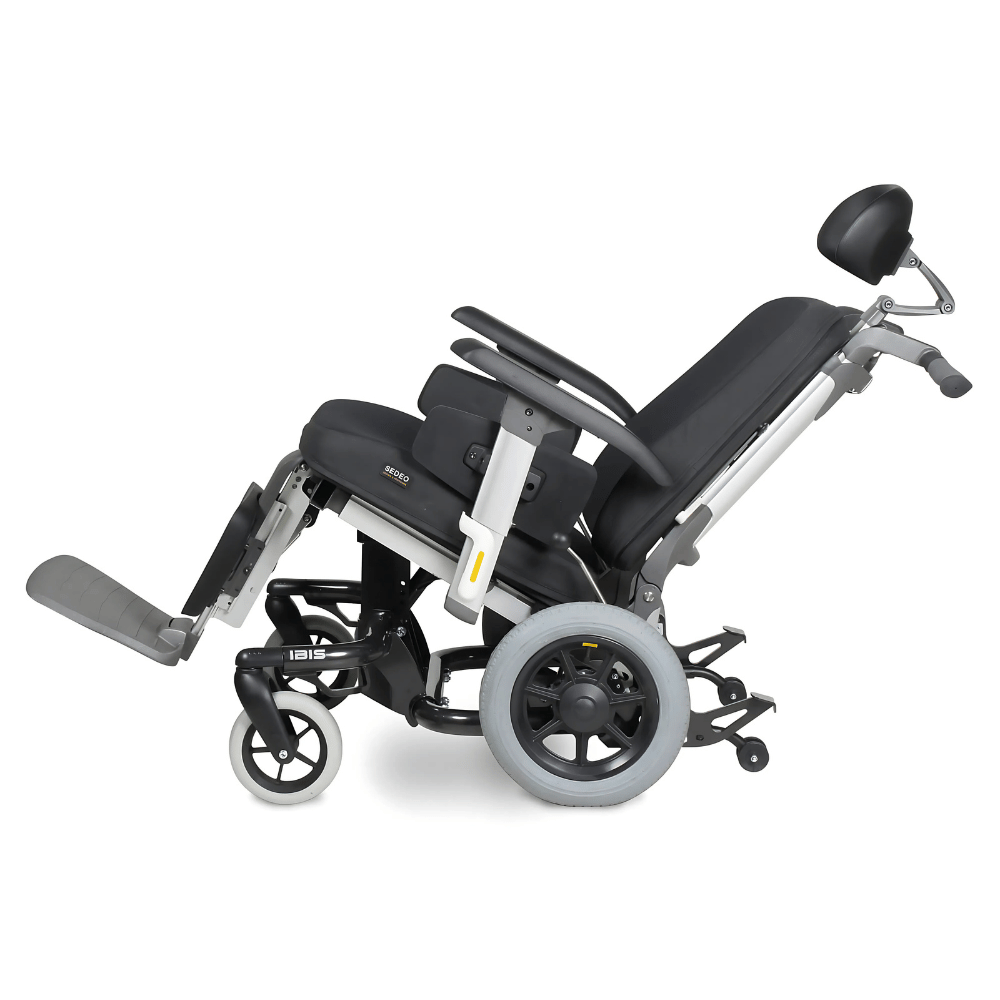Manual wheelchairs are usually designed and built to minimise product weight. This can sometimes give the impression of flimsiness. However, this is far from the case. Join us as we look into the world of bariatric manual wheelchairs.
What Makes a Manual Wheelchair Bariatric?
Let’s start with the obvious question. Fundamentally, this comes down to two factors. Those factors are maximum user weight and maximum seat width. Seat width is greatly variable within certain products (prescriptive chairs) and across standard, off-the-peg, type wheelchairs. 25 stone (158kg) is close to the upper limit of maximum user weight available within the manual wheelchair category.
 However, it should be noted that one category of manual wheelchairs bucks this trend. That would be tilt-in-space wheelchairs. Since these are designed with users suffering extreme mobility limitations in mind, accounting for the effects which massive mobility impediment can have on body weight is important for these chairs. Sunrise Medical in particular are a manufacturer who produce high user-weight tilt-in-space manual wheelchairs. The Breezy Ibis tilt-in-space wheelchair, shown to the right, can accommodate user weights of up to 160kg. That’s 25 stone.
However, it should be noted that one category of manual wheelchairs bucks this trend. That would be tilt-in-space wheelchairs. Since these are designed with users suffering extreme mobility limitations in mind, accounting for the effects which massive mobility impediment can have on body weight is important for these chairs. Sunrise Medical in particular are a manufacturer who produce high user-weight tilt-in-space manual wheelchairs. The Breezy Ibis tilt-in-space wheelchair, shown to the right, can accommodate user weights of up to 160kg. That’s 25 stone.
The Ibis is particularly appropriate for bariatric care home residents. That is because it requires an attendant to adjust the tilt angle. It isn’t coincidence that tilt-in-space wheelchairs, which tend to have high weight capacities, are recommended for users at high risk of pressure sores. Obesity both directly and indirectly increases pressure sore risk. First, it directly increases the risk by exacerbating pressure on vulnerable areas on account of the additional weight pushing down from above. Secondly, because it makes exercise harder, it keeps people more sedentary. And, of course, being highly sedentary is a risk factor for pressure sores.
Other Types of Bariatric Manual Wheelchairs
 Now let’s look at other manual wheelchairs suitable for larger users. Again, Sunrise Medical produce a notable model. This is the Lomax HDM wheelchair. With a maximum user weight of 25 stone (160kg) this product, pictured to the left, is a straightforward configurable steel chair. It is available in both attendant-controlled and self-propelled variants. The seat width can be as much as 2 feet, allowing plenty of space for users with large frames.
Now let’s look at other manual wheelchairs suitable for larger users. Again, Sunrise Medical produce a notable model. This is the Lomax HDM wheelchair. With a maximum user weight of 25 stone (160kg) this product, pictured to the left, is a straightforward configurable steel chair. It is available in both attendant-controlled and self-propelled variants. The seat width can be as much as 2 feet, allowing plenty of space for users with large frames.
Lastly, whilst they would not be considered truly bariatric, some prescriptive manual wheelchairs, on account of their design and construction materials, have a deceptively high maximum user weight. Prescriptive self-propelled wheelchairs rated for a user weight well over 20 stone include the Quickie Life F (22 stone maximum user weight), and the Ki Mobility Catalyst 5, whose heavy-duty version can handle user weights up to 25 stone.
More Choice Than You Might Expect
So, from this piece, you can hopefully appreciate the variety of manual wheelchair options available for the larger user. Whether it’s a tilt-in-space, basic, or prescriptive product, all three types can allow for users of at least 25 stone. Thanks for reading!